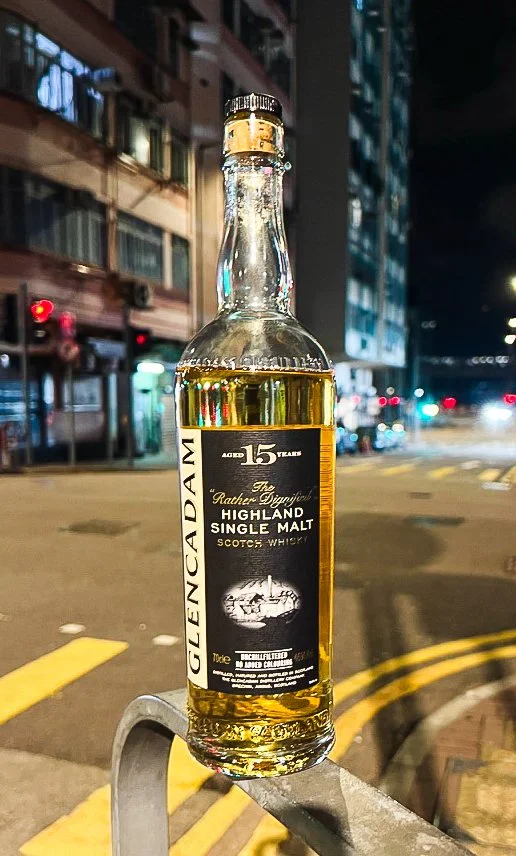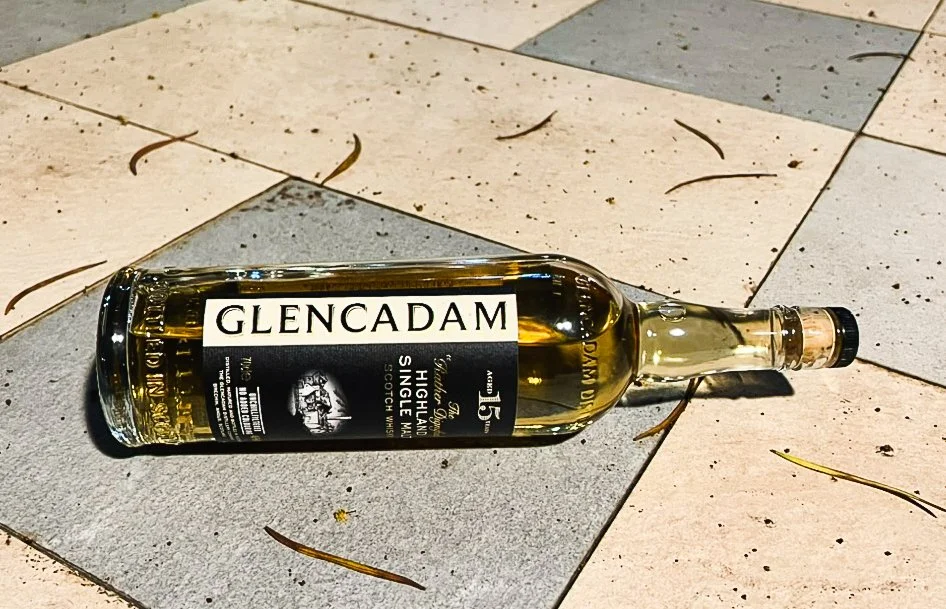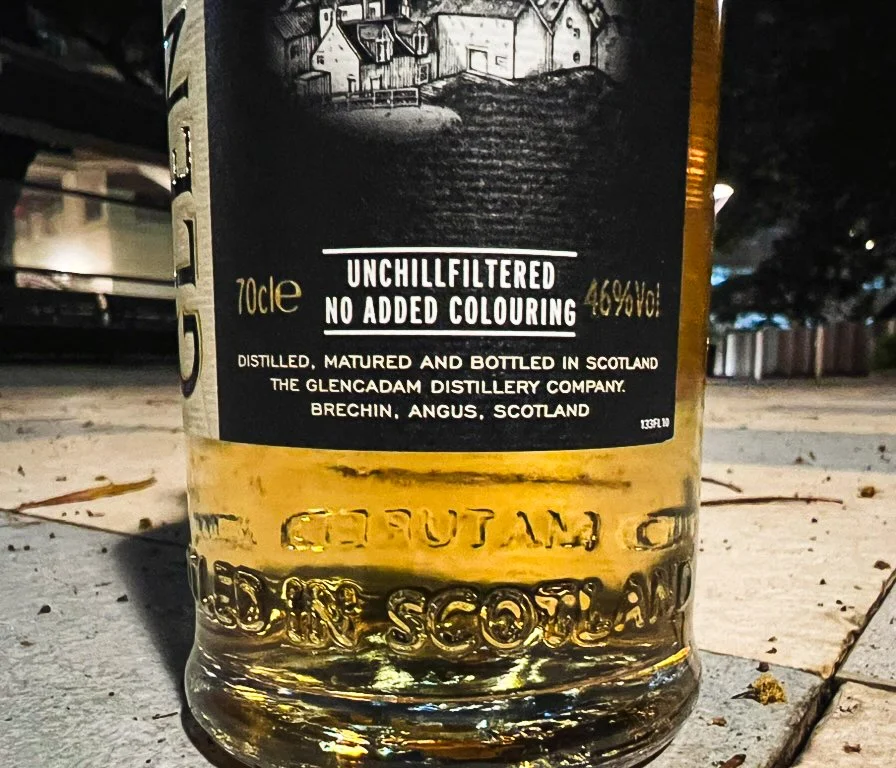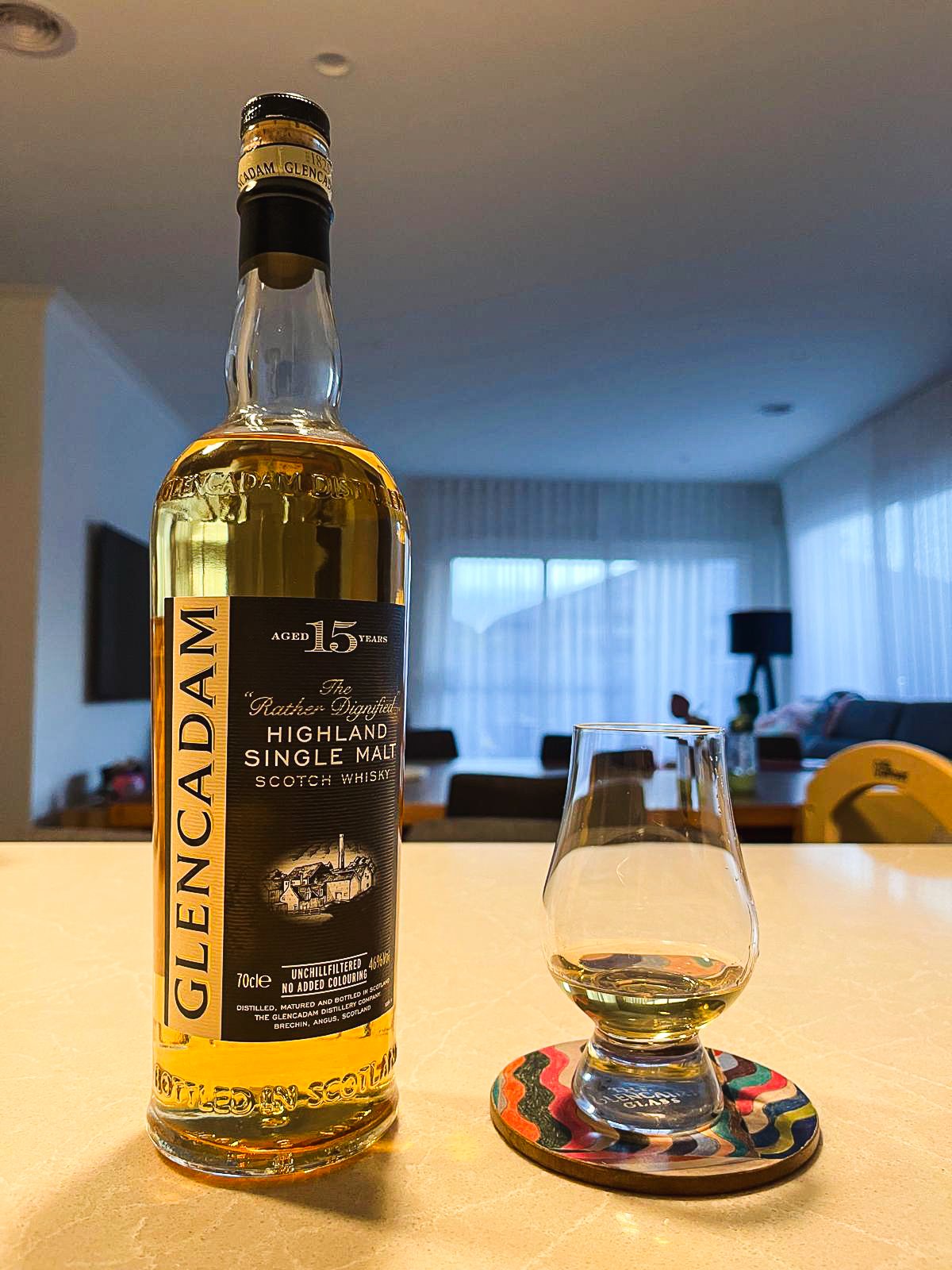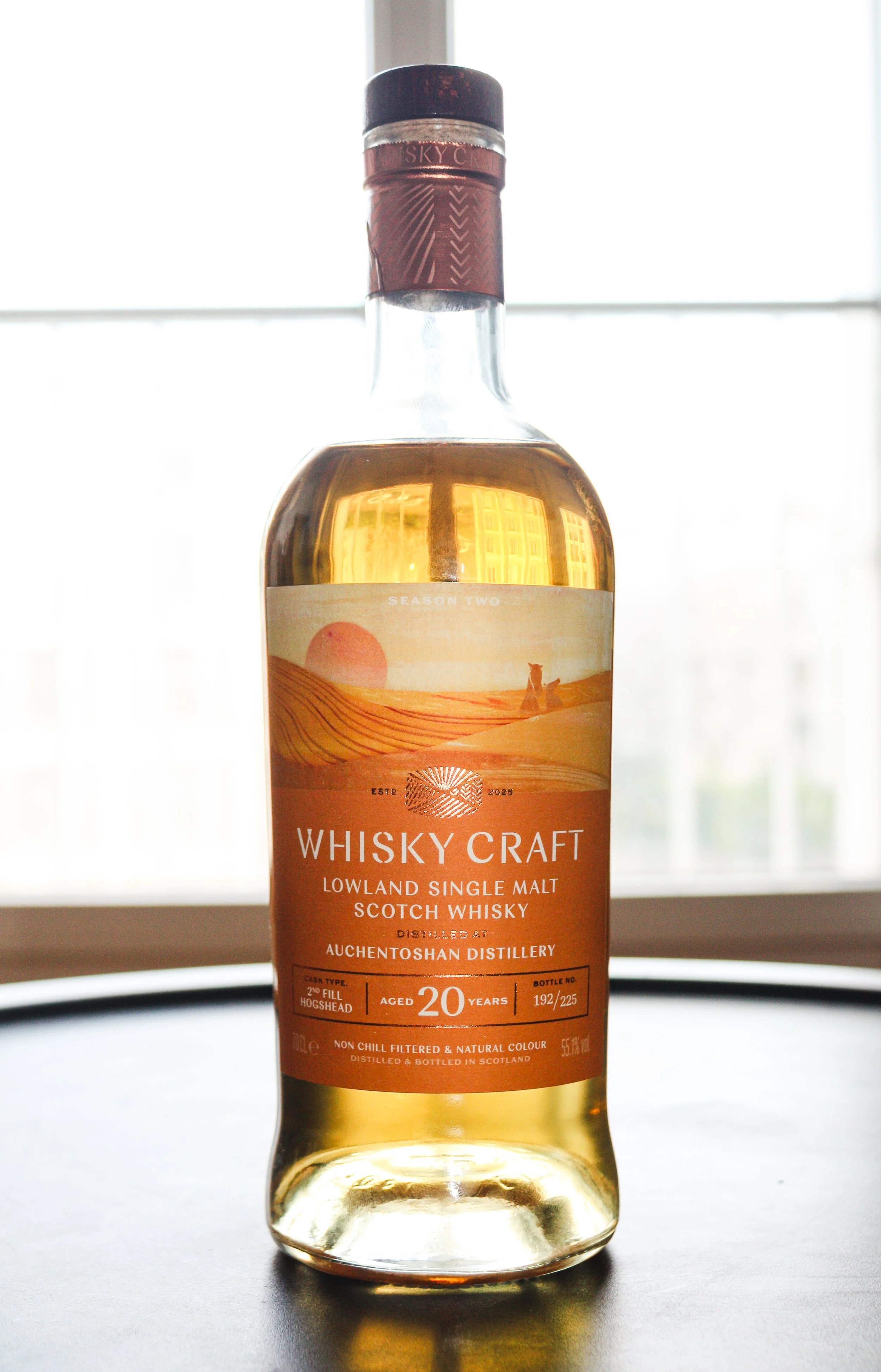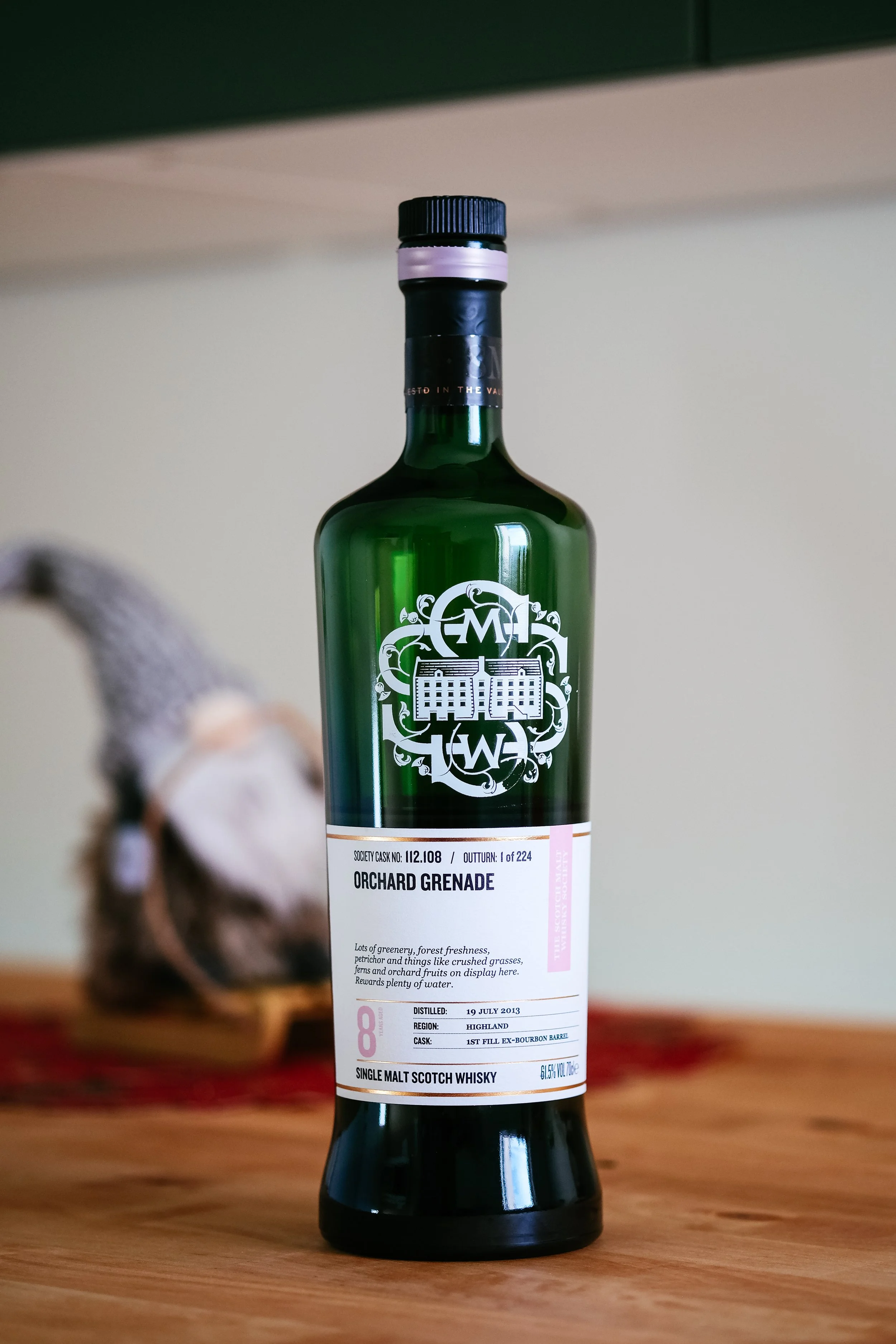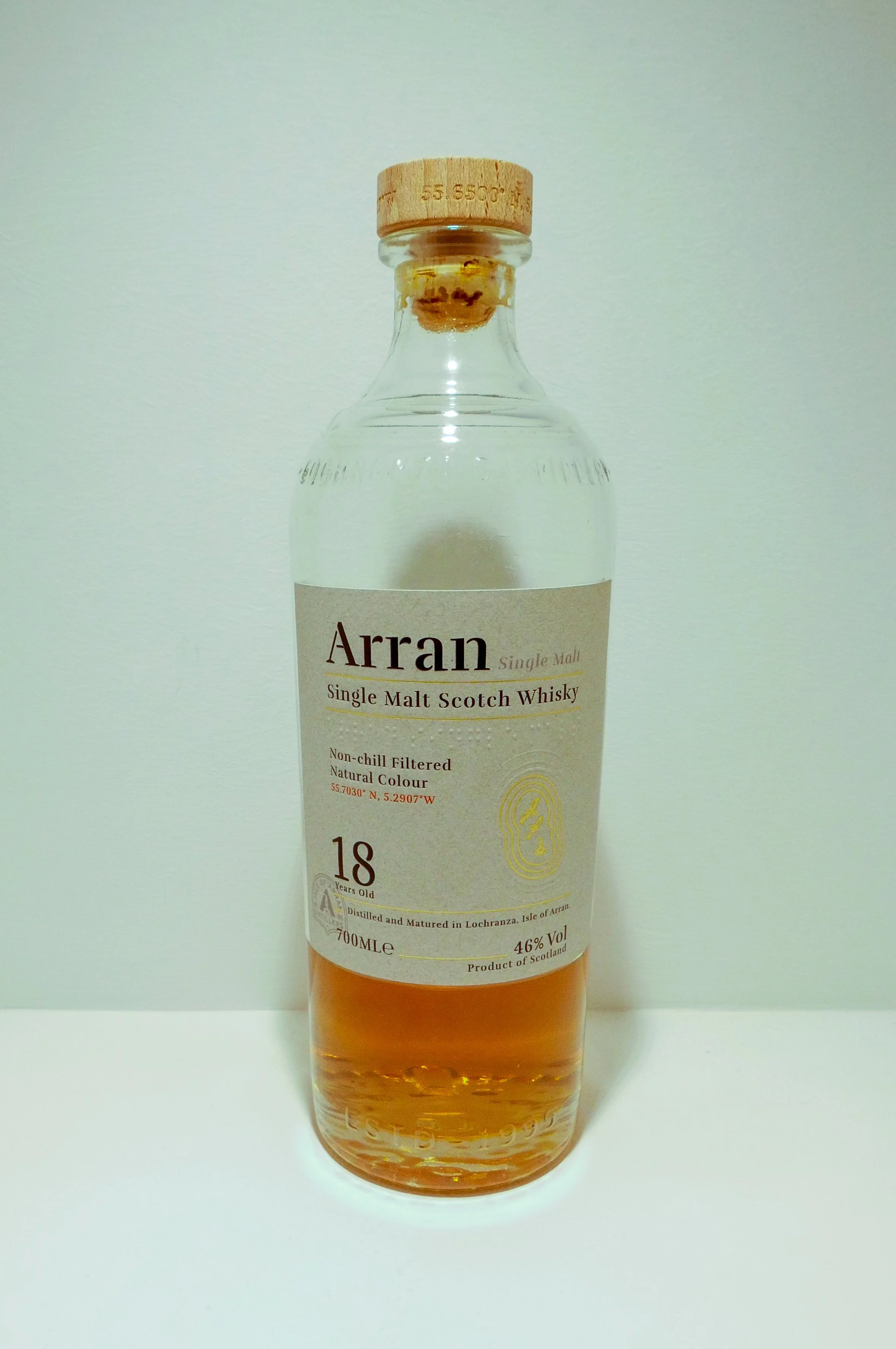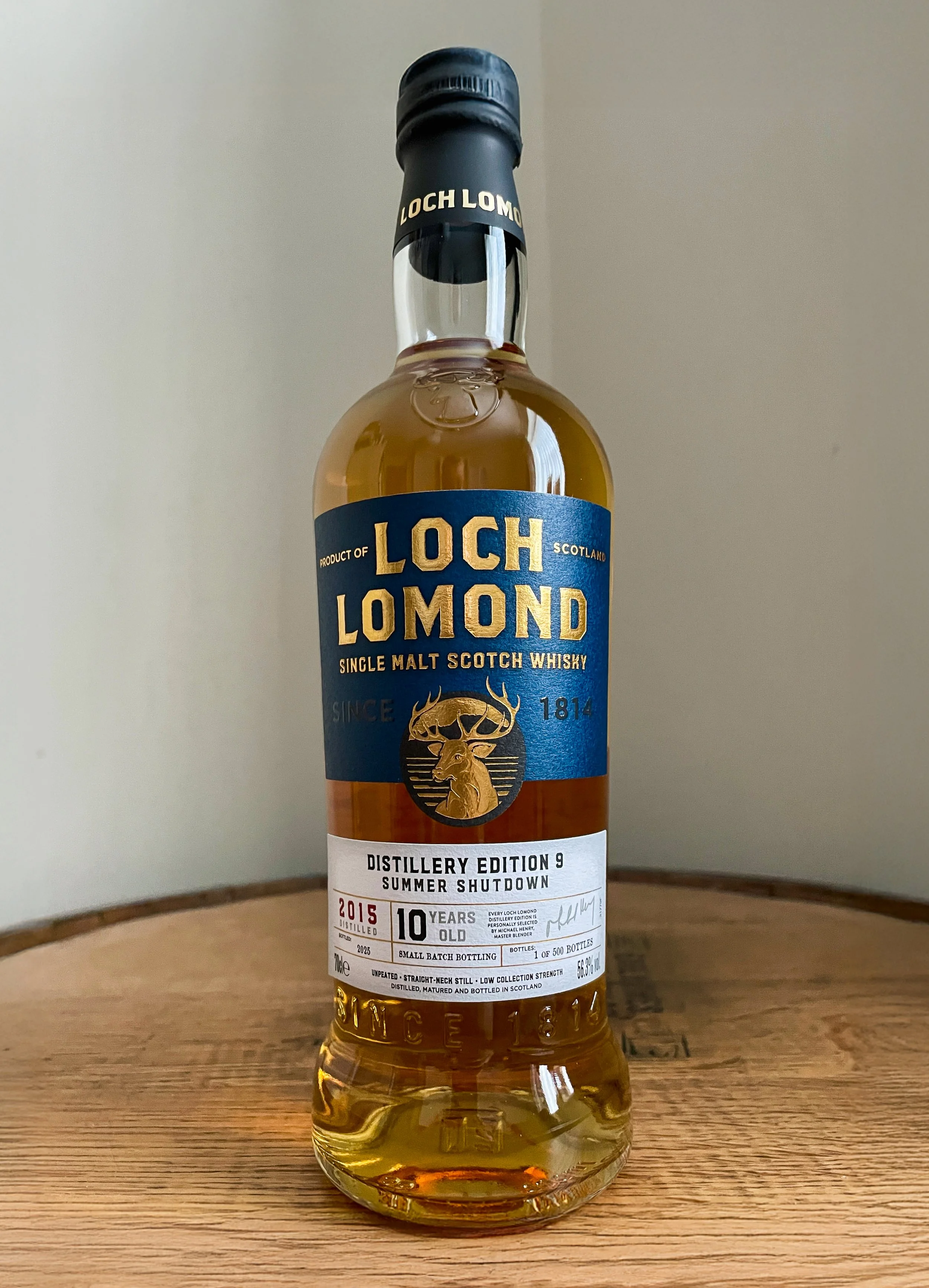Glencadam 15yo
Official Distillery Release | 46% ABV
Score: 7/10
Very Good Indeed.
TL;DR
Vital in shaping my understanding of Scotch whisky
Epiphanies.
We all have at least one, if not a few. Sometimes I’d like to call them milestone whiskies, because they signal a turning point in our whisky exploration journey.
Today, I’m going to share some of mine, how they showed me something I’ve never experienced before and ended up shaping my whisky preferences.
Let’s start from the very beginning, a very good place to start…
Before whisky, there were cocktails; my favourite cocktail to this day is a mojito. Surprise, surprise, it’s not a whisky-based cocktail, but I am very specific about one detail: a mojito has to be mixed with sugar, not syrup, and ideally, the rim should be coated with a generous layer of sugar as well. If I know a bar can’t make a mojito to my liking, I’d order a screwdriver instead - still no whisky.
My first encounter with a whisky-based mixed drink, because calling it a cocktail would flatter it too much, is whisky with green tea, specifically, Johnnie Walker Black Label with cold bottled green tea. For a while in my early adulthood it was the go-to drink for everyone at karaoke - nobody questioned why it had to be that - but tens of bottles of green tea and a couple of bottles of Black Label would be laid on the table for us to mix. It was just something to get us a bit intoxicated.
On one occasion, when I was tasked to mix a jar of it, I decided to try the whisky neat, and I thought it was pretty good. After that, I decided to try other spirits neat: rum was too estery, vodka was too bland, tequila made me nauseous, gin was alright, but whisky, whisky was characterful. From that day on, whisky became my spirit of choice.
Milestone whisky #1: Johnnie Walker Black Label; it introduced me to whisky.
I would always have a bottle of whisky at home, for when I was in the mood for it. At first it would be the cheapest supermarket blend I could get, because whisky was whisky, right? Why spend more when I could get the same thing for less. But very soon, I realised that the Black Label I grew fond of was better than the other blends so, despite it costing more, I went back to it. I must have been in my late teens or early twenties at this point, still a student, but I could afford a bottle of Johnnie Walker Black Label twice a year.
The permanent bottle of whisky in my room didn’t go unnoticed by my dad, and one day he decided to drink a sample of it, “it smells quite good, but that’s rough down the throat,” he winced, “do you like whisky because it gives you the alcohol rush?” It wasn’t why I liked whisky and I didn’t think it was rough; I thought it was quite smooth, but I didn’t know how to articulate my preference for whisky.
Although my dad was a wine connoisseur, he knew a thing or two about spirits, and he introduced the expression (note: the expression, not the concept) ‘single malt’ to me, “that’s the good stuff”.
He then went to his wine stash, grabbed a wooden box, and pulled a bottle of single malt whisky from it, a 25-year-old sherry oak Macallan. Yes, you read it right, he was about to pour a 25-year-old Macallan for someone who thought Johnnie Walker Black Label was a good whisky. “Remember Uncle Milton? He loves his Macallan, and let me take it home after one of his dinner parties, there’s not much left, but it’s good stuff”. And my word, it was good stuff. “I don’t drink much whisky,” Dad said, “but when I do, I opt for Macallan”.
So Macallan was etched in my mind, and the next time I went to the supermarket, I looked for Macallan. The Macallan 12 Sherry Oak was about twice the price of the Black Label, but I’d tried a miniature before from Uncle Milton, and I knew it was nice, much nicer than the Black Label, so I decided to buy a bottle as my treat whisky. I would still have the Black Label around, but the Macallan would be there when I wanted an upgrade. My dad also educated me on sherry casks, “the Scots used to drink a lot of sherry as well,” he would say, ”and what would they do with the sherry casks? They’d mature whisky in it. After a while, they realised they liked the whisky more than the sherry! So nowadays they make the sherry, dump the sherry, and use the casks for whisky!” Of course that’s not entirely correct, but the moral of the story was clear; whisky matured in sherry casks is better, so at the beginning of my single malt journey, I gravitated towards sherry-forward whiskies.
Milestone whisky #2: Macallan 12 Sherry Oak, it introduced me to single malt
After I graduated and had more disposable income, I started to drink more Macallan and less Johnnie Walker, the Macallan 12 year old was relegated to my regular whisky and the 18 year old became my newest treat whisky, at the time I could get it for less than £200 per bottle, and it probably took me more than a year to finish a bottle, so that was OK, but one day when I went to grab a new bottle, the price shot up to something ridiculous, so I never bought another bottle of Macallan 18 again.
My whisky journey stood still for a while, until a friend invited me to a tasting: four friends would come together and we’ll each bring a bottle. Obviously I brought my bottle of Macallan 12, two other friends brought other things, but the bottle that would catapult my descent down the whisky rabbit hole was a Laphroaig Cairdeas.
Other than the friend who brought it, none of us had tried Laphroaig before, and as we sipped it, the room fell silent, and we looked at each other quizzically. What on earth was that? That was an out-of-body experience for the three of us! How could whisky do such a thing? So far, good whisky to me was smooth and soothing; Laphroaig was not that, but it was definitely good, so what is whisky exactly? Next time I was at the supermarket, I bought a bottle of Laphroaig 10.
Milestone whisky #3: Laphroaig 10, it introduced me to heavily peated whiskies.
Soon after, I came across the now famous trilogy of videos from the Modern Rogue featuring Daniel Whittington. From that series, I finally understood the concept of single malt (and the other four categories of Scotch whisky), I understood what adding water and ice does to whisky, how glassware affects my experience of whisky, etc. Most importantly though, and possibly most toxically, was the notion that “the best whisky is the whisky you like to drink”, in other words, there is no hierarchy in whisky, it’s all down to preference. Why was that toxic? Because it gave me an excuse to buy all the whiskies I could find. Remember the friend that introduced me to Laphroaig? He also introduced me to a local whisky retail specialist, and that became my candy shop.
From this point on, my whisky collection exploded from a handful of whiskies to beyond twenty within the blink of an eye: Glenfiddich, Glenfarclas, Glendronach, Talisker, Highland Park, Aberlour, Ardbeg, Laphroaig (of course), Caol Ila, Bruichladdich, Port Charlotte, Bowmore, Auchentoshan, Oban… The list went on and on. Some I loved, some not so much, but I enjoyed all of them, I was in the phase of discovery. Then I came across Ralfy’s channel, and while he reviewed whiskies of all sorts, he emphasised one concept: naturally presented whisky. He always gave them credit, even when the whisky was, in his opinion, awful - such as the Ben Nevis 10, and so I was mindful of my purchases, which was when I first happened across Glencadam 15.
I don’t remember if Glencadam was recommended to me, or it was just the next bottle to buy to add to my collection. Due to reasons I don’t understand, the 10 year old is very hard to find in Hong Kong, and when it’s available, it’s generally quite expensive - not much cheaper than the 15 year old. So when it came to buying a bottle, I decided to go straight for the 15yo, available everywhere, with five more years of maturation. Before this Glencadam 15yo, you might notice most of the whiskies I were enjoying had bold flavours, some due to their sherry influence, like the Glendronach 12yo, some due to their peatiness, like the Ardbeg 10yo. But Glencadam is different, it is unpeated, soft and delicate, and immediately, I realised that whisky doesn’t need to be bold to be good, it can be quiet yet charismatic.
Around this time, I also discovered Roy’s YouTube Channel, Aqvavitae, and he introduced me to the concept of “leaving the spirit in a quiet cask and letting it do its thing”, this 15 year old Glencadam was just that; spirit driven, but mature enough to round off its edges, it doesn’t have an obvious flavour hook, but it’s moreish; also a concept I learned from this bottle - I kept wanting to go back for more.
It led to further exploration of the style, which unfortunately isn’t abundant among official bottlings, with Deanston 18 being another good example (again, weirdly, Deanston 12yo doesn’t often appear in my market). So I looked to the independents: Cadenhead’s, Signatory, Thompson Brothers, Douglas Laing, etc. and it’s here I found my love for Linkwood. I wouldn’t list Glencadam among my favourite distilleries, but the 15-year-old introduced me to a whole new world of possibilities.
Milestone whisky #4: Glencadam 15, it introduced me to delicate and moreish whiskies matured in a quiet cask.
If someone was to ask me, what is my favourite style of whisky, my answer would be unpeated whiskies matured to its teenage years in an ex-bourbon cask. When I try to trace where this preference came from, I’d have to admit it was the Glencadam 15yo.
Review 1/2 - Murdo
Glencadam 15yo, Official bottling, 46% ABV
£85 paid, typically £70 and widely available
Score: 7/10
Very Good Indeed.
TL;DR
Vital in shaping my understanding of Scotch whisky
Nose
Very clean and quiet on the nose, vanilla ice cream, sweet melons, peaches, apples, a nice juxtaposition of white pepper and white sugar, with hints of ginger as well. If there was anything to complain about, it’s a tad too sour on first approach
Palate
Much more robust on the palate than the nose would suggest. Creamy bitter vanilla on the arrival, peppermint, sweet fruits such as bananas, pears, and melons as well; there is a sort of sourness but it doesn’t come off as a fruity sourness, not vinegar, maybe ‘winey’ is the best I can come up with.
Yeasty fermentation notes emerges as the whisky sits in the glass, with a hint of rye spice as well; a dash of water amplifies the bananas, but surprisingly it brings out a nuttiness that wasn’t there before. On the finish there’s the white pepper and white sugar again, which lingers on quite a bit. This is the sort of dangerously moreish whisky that I could sip all night on the sofa.
The Dregs
This would not be the last milestone whisky: Springbank 10 would go on to open my eyes to bright and dirty whiskies, various Port Charlotte expressions would show me how whisky can dance with wine casks, not to mention my dalliances with bourbons too.
However, Glencadam 15 remains the most important milestone whisky of them all, because it taught me the concept of moreishness; the idea that a good whisky doesn’t have to be bold, and given enough time in the Scottish climate, something quite magical can be created with quieter casks. There are a lot of 10 to 12 year old fully bourbon matured whiskies, but most of them contain fairly active casks, this 15 year old seems to place more emphasis on refill casks, and with a few more years of maturity, it seems to occupy a space in the market where few other whiskies sit.
It hasn’t been a permashelf item for me over the years, but whenever I come back to it, it reminds me of what it has done to shape my palate.
Score: 7/10 MMc
Review 2/2 - Calder
Glencadam 15yo, Official bottling, 46% ABV
AUS$150 paid, typically £70 and widely available
I come from a country where loud and bright is king. The many colours of Diwali; clothes and art alight with flair, and a cuisine where the simplest of dishes involve the skills and resources of a professional alchemist. Perhaps it was my cultural background which informed my initial preferences for whisky: the powerful Islay peat, followed by the warm-climate maturation of Australian whisky, and now my taste for waxy, ‘wormtubby’ spirits with a characterful distillate. It was due to this trajectory in flavour preferences that led to me looking over a large swathe of mainland Scotch distilleries which tread the more classic ex-bourbon oak profiles.
Reflecting over my whisky history, it’s almost as if I’ve learned to play tennis without hitting a forehand, which is why it’s a refreshing education to pick up more classic malts for my current dram sessions. Glencadam is one of the few distilleries where the main range has been familiar to me, in the effort of exploring classic malts I was able to obtain samples of their 10, 18, and 21 year olds. I was quite taken by all of them, ranging from effortlessly charming to fundamentally addictive. They’ve garnered an endearing reputation on the site and have become akin to refill bourbon casking much like Glendronach may be considered the sherry masters. The missing link in my experience has been the 15yo, so let’s see if they can bat another home run with this one…
Score: 7/10
Very good indeed.
TL;DR
A testament to good spirit and restrained cask influence
Nose
A rush of sherbet-like yuzu, almost like if yuzu fruit were a hard-boiled lolly. The fruity-floral interplay comes in with melon bread and elderflower soda. Over time more sweetness emerges from the spirit; Chinese rock sugar with the thick sticky floral honey from a freshly brewed aged white tea. Spiciness from oak comes in as candied ginger and white pepper, with a dessert finish of cupcake icing and overripe white peaches.
Palate
The first thing I’m reminded of on the palate is a country bakery vanilla slice, I do think these pastries are native to Australia (maybe NZ too?), so for the global readership they are a slice of two layers of thin wafery pastry sandwiching a thick layer of custard, topped by vanilla icing and powdery sugar [we have ‘em too - love ‘em WMc].
Coming back to the whisky, we have a dry bubbly mouthfeel characterised by soda water, followed by a salty creaminess. Fruitiness on the mid-palate with tart Granny Smith apples, underripe bananas and an edge of honeydew melon. The finish highlights the malt, with digestive biscuits and thick salted shortbread, finally with a spicy end of fresh green ginger.
The Dregs
Glencadam is a lesson in restraint; a message that not everything needs to be bold, brash and overstated. A quietly confident distillery that lets skilled distillation and classic maturation tell the story. No need for DOP wine names stamped onto a whisky bottle or contrived Arbeggy narrative nonsense, just an age, simply presented.
The profile itself is not exactly demure, I’m enjoying the interplay of sour, malt, floral and sweet in refill bourbon whiskies. Given time, they don’t need to taste like a middle of the road Glenbeige (credit to Tyree on that one). The sherry bombs may have had their time in the sun, and refill bourbon is making a return.
Score: 7/10 CD
Tried this? Share your thoughts in the comments below. MMc
-
Dramface is free.
Its fierce independence and community-focused content is funded by that same community. We don’t do ads, sponsorships or paid-for content. If you like what we do you can support us by becoming a Dramface member for the price of a magazine.
However, if you’ve found a particular article valuable, you also have the option to make a direct donation to the writer, here: buy me a dram - you’d make their day. Thank you.
For more on Dramface and our funding read our about page here.
Other opinions on this:
Got a link to a reliable review? Tell us.


